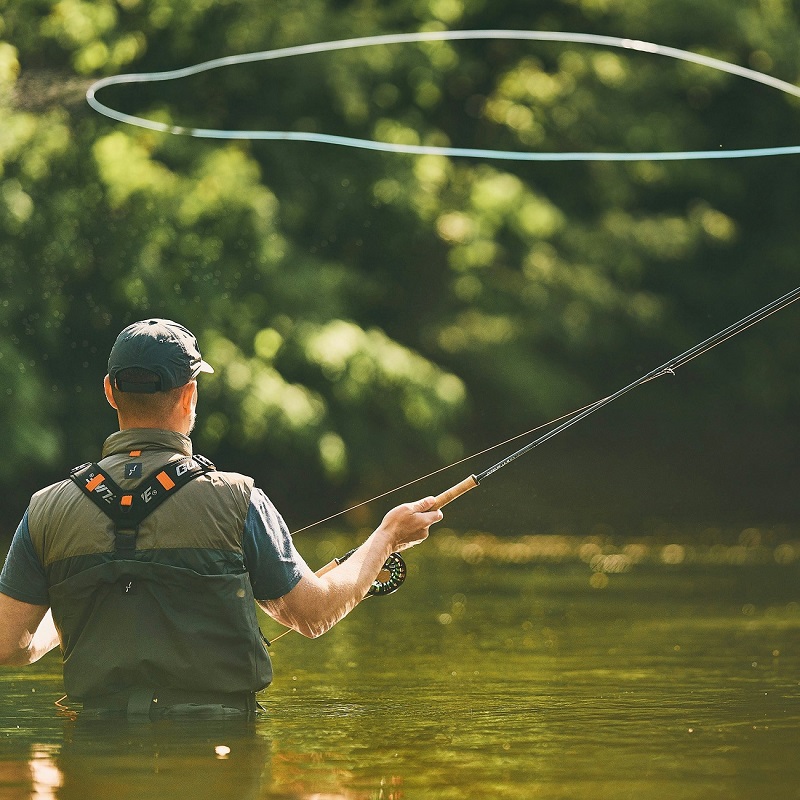Introduction: The Essentials of Matching Fly Fishing Gear
When it comes to fly fishing, having the right equipment is critical to ensuring a successful and enjoyable experience on the water. Among the essential components are the fly fishing rods, reels, and lines. Properly matching these elements can drastically improve your casting accuracy, presentation of the fly, and overall fishing success. Understanding the interplay between these components is vital, not just for beginners but also for seasoned anglers.
Whether you are pursuing trout in a mountain stream or chasing steelhead in a vast river, having the right setup can make all the difference. Thus, in this article, we will explore the best practices for matching fly fishing rods with the appropriate reels and lines. Moreover, we will provide tips and insights to help you optimize your fishing experience, ensuring that you have the tools necessary for success on the water.
Understanding Fly Fishing Rods
The first component in your fly fishing setup is the rod. Fly fishing rods come in various lengths, actions, and materials, and each specification influences how the rod performs. Understanding these details is essential when matching the rod to the appropriate reel and line.
Length and Action
- Length: Fly rods typically range from 6 to 9 feet long. Longer rods provide increased casting distance and leverage when landing fish, so they are generally beneficial for larger bodies of water. Conversely, shorter rods offer more control in tight quarters, making them ideal for small streams and more technical presentations. Generally, an 8-foot rod is ideal for most freshwater applications, making it a versatile choice for a range of fishing scenarios.
- Action: The action of a rod refers to how it bends when pressure is applied. Fast action rods bend primarily at the tip, providing more power for casting longer distances and delivering higher line speeds. In contrast, slow action rods bend throughout the length, which makes them more forgiving and ideal for delicate presentations. Each angler’s preference may differ based on the specific fishing conditions and species being targeted.
Material and Weight
- Material: Fly rods are commonly made from graphite, fiberglass, or bamboo. Graphite rods are lightweight and sensitive, making them popular among experienced anglers. They provide excellent responsiveness, allowing anglers to feel every movement of the fly. Fiberglass rods, on the other hand, offer a more forgiving action, and novices often favor them due to their durability and ease of use. Bamboo rods are traditional and often sought after for their aesthetic appeal and slower action but can be expensive and require more maintenance.
- Weight: The weight of the rod is also a critical factor to consider. Rod weights typically range from 0 to 14, with lighter rods (like a 2-weight) being ideal for small streams and delicate presentations of tiny flies, while heavier rods (like an 8-weight or 10-weight) work well for larger species or saltwater environments. Matching the rod weight to the species you are targeting ensures that you have adequate control and casting ability.
By understanding these aspects of fly fishing rods, you can begin to make more informed decisions about which type of rod will best suit your needs.
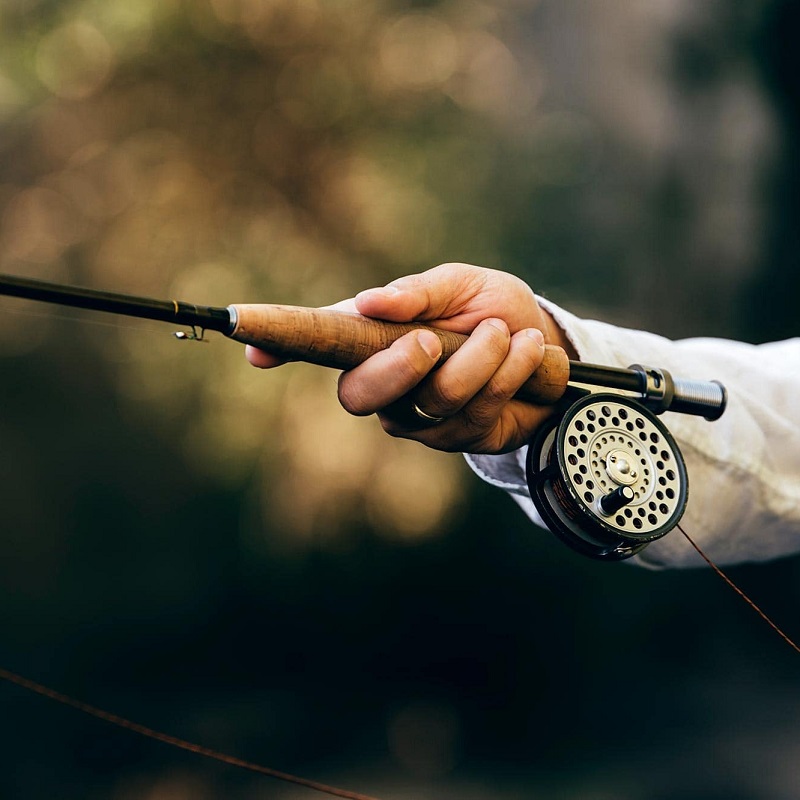
The Role of Reels in Your Fly Fishing Setup
Once you’ve chosen your fly fishing rod, the next step is to select a suitable reel. The reel plays an important role in the overall functionality of your setup and directly impacts your fishing success.
Types of Reels
- Single Action Reels: These are the simplest types of fly reels, offering a one-to-one ratio for line retrieval. They are lightweight, easy to use, and suitable for beginner anglers targeting smaller fish.
- Multiplying Reels: These reels allow for more efficient line retrieval, reducing the effort needed to reel in fish. They offer a higher gear ratio, which can be beneficial when targeting larger species. Some models feature built-in drag systems for added control during fights with larger fish.
Size and Weight Considerations
When matching a reel to your fly fishing rod, it’s crucial to consider the size and weight of the reel in relation to the rod. A general rule of thumb is to choose a reel that corresponds to the weight of your rod – for example, if you have a 5-weight rod, opt for a 5-weight reel. Additionally, consider the balance of the setup; a balanced rod and reel combination will feel more comfortable in hand and allow for smoother casting.
Furthermore, ensure that the reel has a smooth drag system to effectively manage line tension. This system allows you to adjust the resistance when battling a fish. A quality drag system contributes to a successful catch, preventing the line from breaking under pressure and allowing for controlled fights.
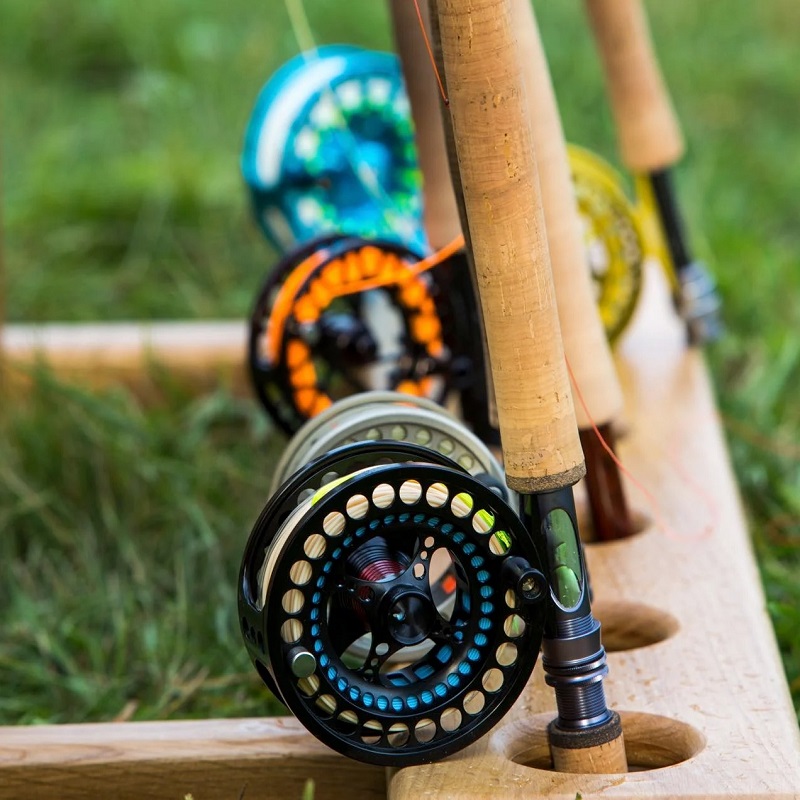
Choosing the Right Fly Lines
The fly line is the third component that completes your fly fishing setup. Understanding how to select the right fly line is essential for effective casting, presentation, and ultimately, your fishing success.
Line Weight and Taper
- Weight: Fly lines are classified by their weight, similar to rods and reels. The weight of the line should match the weight of the rod and reel. For instance, a 6-weight line should be paired with a 6-weight rod and reel. This matching ensures proper casting and balance. Using a line that is too heavy or too light for your rod may result in poor performance and frustration.
- Taper: Fly lines come with different tapers, each affecting how the line behaves during casting. The three primary types of tapers are weight-forward, double taper, and level lines. Weight-forward lines are designed for casting distance and are suited for a variety of fishing conditions. Double taper lines provide better control and are great for delicate presentations, letting you land the fly softly on the water. Understanding the differences in taper can enhance your presentation and increase your chances of attracting fish.
Material and Coating
- Material: People typically make fly lines from PVC or similar materials, which allows for lightweight and durable performance. Some people design certain lines to float, while they design others to sink. Choosing a floating line is ideal for surface presentations with dry flies, while sinking lines work best for fishing at deeper water levels when targeting fish that hold low.
- Coating Enhancements: Many modern fly lines come with additional coatings for better performance, such as UV resistance and reduced friction in the water. Some lines are also textured to improve casting distance and accuracy. These features can significantly improve your overall fishing experience, making it easier to cast and retrieve.
By carefully examining these aspects of fly lines, you can ensure that your chosen line matches your rod and reel, enabling you to fish effectively and confidently.
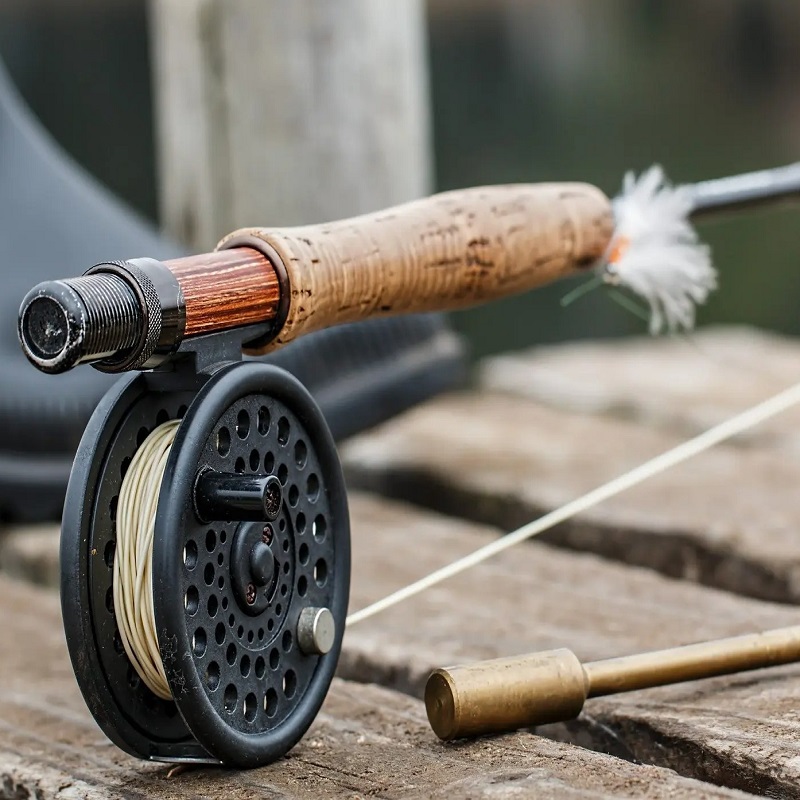
Matching Fly Rods, Reels, and Lines
Understanding how to match fly rods, reels, and lines is essential for maximizing your fishing performance. Here are a few key points to remember:
Balance and Performance
When selecting your gear, always consider the balance of the components. A properly balanced setup will feel comfortable in hand and allow you to cast with precision and ease. If your rod is too heavy for your reel, or if your line is not suited to your rod, you may struggle to cast effectively.
Testing the Setup
Before heading out on your fishing trip, take the time to test your complete setup. Casting in your backyard or local park can help you identify any issues with the balance, weight, or functioning of your gear. This testing will allow you to make adjustments as necessary, ensuring that you’re fully prepared. If possible, practice casting with the specific flies you intend to use to get a feel for how they land on the water.
Comfort and Fishing Style
Ultimately, choosing the right combination of fly fishing rods, reels, and lines will depend on your personal comfort and fishing style. There is no single “perfect” setup; rather, it involves finding a combination that feels right for you. Listen to your own experience and preferences to create a setup that enhances your time on the water. Your comfort level when handling your gear can directly impact your performance and enjoyment during fishing trips.
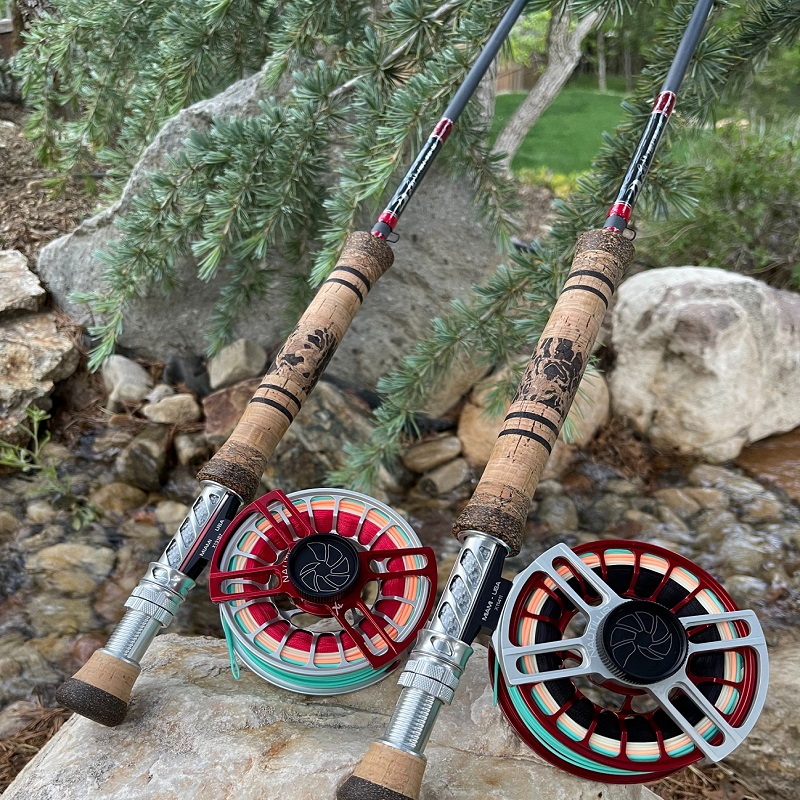
Troubleshooting Common Issues
Even with the best gear, you may encounter challenges while fly fishing. Understanding how to troubleshoot common issues can keep you on the water longer and make your experience more enjoyable.
Line Twists and Tangles
Line twists and tangles are common frustrations while fishing. To minimize this, always ensure your line is properly spooled with the correct amount of backing. Over-spooling can lead to tangling, so play it safe by leaving some space on the spool. Additionally, practicing your casting technique can help reduce unnecessary movements that contribute to twisting. If you find yourself with a tangled line, take a moment to untangle it before continuing.
Poor Casting Techniques
If you’re struggling with casting, it’s possible that the weight of your line does not match your rod strictly, or you may need to adjust your casting style. Practicing at home can help identify areas for improvement in your technique, such as timing and wrist movements. Additionally, consider seeking guidance from experienced anglers or taking fly fishing lessons to enhance your skills and understanding of proper casting.
Damage to Gear
Your fly fishing equipment is an investment, so taking care of it is essential. Regularly inspect your rods, reels, and lines for any signs of wear. When you notice any damage, such as frayed lines or cracks in the rod, address these issues promptly. Proper maintenance and timely repairs can prevent further problems down the road and ensure lasting performance.
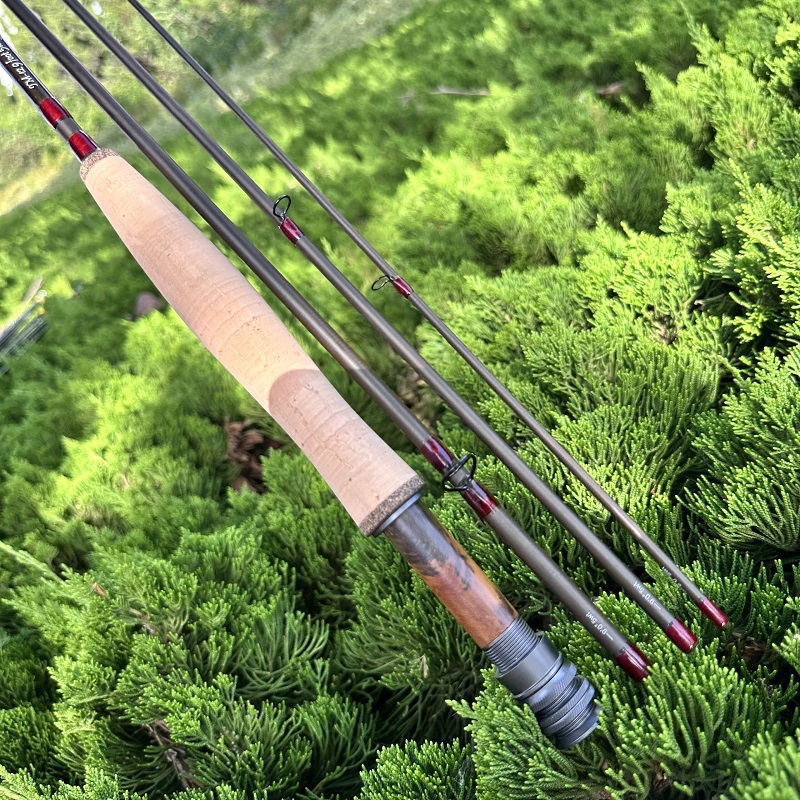
Conclusion: Elevate Your Fly Fishing Experience
In conclusion, matching your fly fishing rods with the right reels and lines is essential for elevating your fishing experience. By understanding the specifications of each component and ensuring that they work together harmoniously, you’ll enhance your casting, improve your presentation, and ultimately increase your chances of a successful catch.
Moreover, taking the time to troubleshoot issues, practice your techniques, and maintain your gear will ensure that you are well-prepared for any fishing adventure. Enjoy the tranquility of being on the water while fishing, knowing that you have the right setup for a successful day of angling. So gear up, hit the water, and enjoy the thrill of fly fishing!
